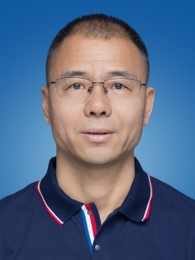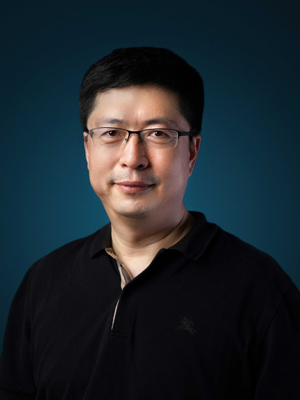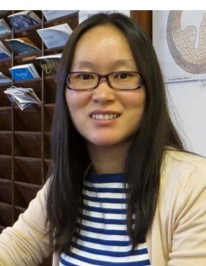为促进国际学术交流与合作,我校将邀请我国和新西兰两国有害海藻类研究的顶级专家,于2024年9月18日在武鸣校区举行“中国-新西兰有害藻华与海产品安全双边研讨会”,诚邀校内师生到会交流。会议安排如下:
一、会议主题
中国和新西兰两国有害藻华与海产品安全
二、主办单位、承办单位和协办单位
(一)主办单位
南宁师范大学
(二)承办单位
南宁师范大学地理与海洋研究院
三、会议时间和地点
时间:2024年9月18日9:00-17:00
地点:南宁师范大学武鸣校区B106
四、学术报告及报告人
1.Kirsty Smith, Senior Scientist 9:30-9:50
HABs in Aotearoa: preparing for climate change

Kirsty Smith是分子和藻类生态学科学组负责人和海洋生态学家,研究领域包括浮游植物群 落动力学、有害藻华、海洋无脊椎动物和入侵物种。她精通分子技术在生物多样性和海洋生物适应性领域的应用,包括qPCR/ddPCR、宏条形码、全转录组测序和表观遗传学。Kirsty Smith是新西兰商业、创新和就业部战略科学投资基金资助的海产品安全研究平台和新西兰微藻藻种库的主要负责人。她最近还获得了一项为期五年的研究计划的资助,该计划旨在调查气候变化对微藻群落的影响。Kirsty Smith发表论文100多篇,是Frontiers in Protistology杂志的专业主编。
Kirsty Smith is a Science Group Manager (Molecular and Algal Ecology) and a marine ecologist specializing in phytoplankton community dynamics, harmful algal blooms, marine invertebratesand invasive species. She has expertise in a wide range of molecular techniques for characterizing
biodiversity and understanding adaptation in marine organisms, including the use of qPCR/ddPCR, metabarcoding, whole transcriptome sequencing and epigenetics. She currently co-leads both theSafe New Zealand Seafood Research Platform, and the nationally significant Cawthron InstituteCulture Collection of Microalgae, both funded through the New Zealand government. She was also recently awarded funding for a five-year research programme investigating the impacts of climate change on microalgal communities. She has published over 100 scientific publications and is the Specialty Chief Editor for the new Frontiers in Protistology journal.
2.Haifeng Gu, Senior Scientist 9:50-10:05
High-resolution DNA metabarcoding from modern surface sediments uncovers diverse dinoflagellate cysts in the Pacific and Arctic Ocean

顾海峰,自然资源部第三海洋研究所研究员,主要从事有害赤潮生物学和生态学研究,在产毒甲藻多样性及其产毒特征等方向做出多项创新研究成果,发现并命名了甲藻门的10个 新属,37个新种,发表SCI收录论文140多篇,出版《中国近海甲藻包囊》专著1部,主 持国家重点研发计划、国家自然科学基金面上基金等项目,获海洋创新成果奖二等奖2次。国际合作经验丰富,主持中东盟海上合作基金项目5个东南亚国家组织联合调查10多次,取得了较好的社会和外交效益。现任Harmful Algae、Frontiers in Marine Science副主编、应用海洋学报编委,南京信息工程大学博士生导师。
Haifeng Gu, a senior scientist at the Third Institute of Oceanography, Ministry of Natural Resources, mainly engages in the research of harmful algal blooms (HABs) biology and ecology. He has made several innovative contributions in the field of toxic dinoflagellate diversity and their toxin production. He discovered and named 10 new genera and 37 new species within the Dinophyceae. He has published over 140 papers indexed by SCI and a book ofDinoflagellates Cysts in Coastal Waters of China. He has led national projects such as the key R&D projects of MOST and the General Program of the Natural Science Foundation of China. He has won the Second Prize of the Ocean Innovation Achievement Award twice. With extensive international collaboration experience, Haifeng Gu has led the China-ASEAN Maritime Cooperation project and organized over 10 joint surveys in five Southeast Asian countries, achieving significant social and diplomatic results. He currently serves as an Associate Editor for journals ofHarmful AlgaeandFrontiers in Marine Science, is a member of the editorial board of theJournal of Applied Oceanographyin China, and is a PhD supervisor at Nanjing University of Information Science & Technology.
3.Laura Biessy, Research Scientist 10:05-10:20
Accumulation and depuration of ciguatoxins in important aquaculture species in Aotearoa New Zealand

Laura Biessy是一名年轻的科学家,她从水生生态学和分子技术角度研究水环境与人类健康,研究聚焦海洋和淡水有害藻华,对贝类中的海洋生物毒素尤其感兴趣。她博士阶段研究河豚毒素,通过综合应用分子技术、化学分析和实验室研究调查河豚毒素在新西兰贝类中的来源和传递途径。Laura Biessy到Cawthron研究所工作后,与Kirsty Smith等共同负责新西 兰商业、创新和就业部战略科学投资基金资助的海产品安全研究平台,并开展海洋蓝藻 以及影响鱼类和贝类的有害藻华生态研究。她是当前Cawthron研究所环境DNA研究负责人,主要负责开发可商用的宏条形码技术。与国内外学者合作发表论文27篇,她的博士论 文还得到了三个国家和国际奖项,并应邀在新西兰议会发表演讲。
Laura Biessy focuses on aquatic ecology and the application of molecular tools to understand these complex environments and enable the protection of human health. She specializes in marine and freshwater harmful algal blooms but has a particular interest in marine biotoxins present in shellfish. Her PhD research focused on tetrodotoxin, and used a wide range of molecular, analytical, and laboratory-based studies to investigate the source and transmission of the toxin in New Zealand shellfish. Since finishing her PhD, she has worked as a research scientist at Cawthron where she leads components of the New Zealand government funded Seafood Safety research platform, in particular the study of marine cyanobacteria and the ecology of harmful algal blooms impacting fish and shellfish. She is currently the environmental DNA science leader at Cawthron, developing the use of environmental DNA for commercial purposes. Dr. Biessy has 27 publications in international peer-reviewed journals with national and international collaborators. Her doctoral study also resulted in three national and international awards and invited talks to the Primary Production Select Committee at the New Zealand Parliament.
4.Rencheng Yu, Senior Scientist 10:20-10:35
Understanding the diverse profiles of paralytic shellfish toxins in the coastal waters of China

于仁成,中国科学院海洋研究所研究员,博士生导师,所学术委员会副主任,山东省泰山学者特聘专家,科技部重点研发项目首席。兼任中国海洋湖沼学会水环境分会主任委员,中国环境学会海洋环境专业委员会副主任委员,中国海洋学会理事,东亚赤潮研讨会科学指导委员会委员等。长期从事海洋环境科学和有害藻华研究,国内率先开展赤潮藻毒素的分析和研究工作。先后承担科技部重点研发项目、自然科学基金委联合基金重点项目等国家级项目20余项,在国内外刊物上发表论文200余篇。
Rencheng Yu, a senior scientist at the Institute of Oceanology, Chinese Academy of Sciences, is a PhD supervisor and the deputy director of the Academic Committee of the institute, a Distinguished Taishan Scholar in Shandong Province and serves as the chief scientist of key Research and Development Project for the Ministry of Science and Technology (MOST). He is also the chairman of the Water Environment Branch of the Chinese Society for Oceanology and Limnology, vice chairman of the Marine Environment Committee of the Chinese Society for Environment Sciences, member of council of Chinese Society of Oceanography, and member of council of the Scientific Advisory Committee of the East Asia HABs Symposium. He has been engaged in marine environmental science and harmful algal blooms (HABs) research for a long time, being one of the first in China to develop research on HABs phycotoxins in China. He has undertaken more than 20 national-level projects, including key R&D projects of MOST and key projects of the Joint Fund of the Natural Science Foundation of China. He has published over 200 papers in academic journals.
5.Sam Murray, Senior Scientist 10:35-10:50
Mapping the metabolite fingerprint of theGambierdiscusgenus

Sam Murray研究员,拥有20年的研究和商业实验室工作经验。Sam Murray是Cawthron研究所太平洋地区科学影响项目负责人,这是一个由多家研究机构组成的跨学科团队,致力于为太平洋岛国提供支持。Sam Murray擅长发现和分析有害微藻产生的生物活性化合物,这些化合物可在海洋生物中富集并影响人类健康。该项研究涵盖新西兰、太平洋岛国以及世界其他沿海国家,在雪卡毒素研究上尤为出色。本项目期间,他领导了几个太平洋国家的分析实验室建设,旨在通过扩大/新的贸易协定帮助这些国家改善公共卫生和促进经济发展。Sam Murray发表论文25篇,目前正在帮助新西兰土著(毛利人)社区使用快速工具检测海产品中的麻痹性贝类毒素。
Sam Murray is a senior marine scientist at Cawthron Institute, New Zealand, with 20 years of experience working in research and commercial laboratories. He is also Cawthron’s Science Impact Leader for the Pacific, a cross-institute multi-disciplinary team focused on supporting communities in the Pacific. Sam specializes in the discovery and analysis of bioactive compounds produced from harmful algae, their accumulation in marine species, and their potential risk to human health. This research spans multiple projects covering existing and emerging risks to New Zealand, our Pacific neighbours, in particular ciguatera poisoning, and other coastal nations around the world. During this time Sam has led analytical laboratory capability and capacity-building projects for several Pacific nations, with the focus of these laboratories to help improve public health and aid economic development via expanded/new trade agreements. Dr Murray has published 25 scientific publications and is currently helping indigenous (Māori) communities in New Zealand to use rapid tools for the detection of paralytic shellfish toxins in their seafood harvest.
6.Songhui Lv, Senior Scientist 10:50-11:05
Kareniaspecies along the Chinese coast: species diversity and toxicity

吕颂辉,暨南大学教授、博士生导师,任暨南大学水生生物学国家重点学科负责人、“水体富营养化与赤潮防治”广东省高校重点实验室主任。兼任中国海洋与湖沼学会常务理事,中国海洋与湖沼学会藻类学分会副理事长,中国海洋与湖沼学会海洋环境专业委员会副主委,中国生态学会海洋生态专业委员会常务理事。牵头建立了广东省海洋有毒有害微藻藻种库。先后主持和承担国家973和863课题、国家科技重点研发项目课题、国家基金委联合基金重点项目以及省部级项目数十项。长期以来一直致力于海洋浮游植物生态学与海洋赤潮的研究和应急预警工作。以第一或通讯作者在EST,CEJ,Aquaculture, Harmful Alage等期刊发表论文200多篇,出版专著三部。
Songhui Lv, a professor and PhD supervisor at Jinan University, serves as the head of the National Key Discipline of Aquatic Biology and is the director of the Guangdong Provincial Key Laboratory forEutrophication and Red Tide Control in Water Bodies. He is executive director of the Chinese Society of Oceanology and Limnology, vice chairman of the Phycology Branch and deputy chairman of the Marine Environment Committee of the Chinese Society Oceanology and Limnology, as well as executive director of the Marine Ecology Committee of the Ecological Society of China. He has established Guangdong Toxic and Harmful Microalgae Culture Collection. Songhui Lv has undertaken dozens of projects, including the National 973 and 863 programs, the key R&D projects of MOST, key projects of the Joint Fund of the Natural Science Foundation of China. He has long been committed to research on marine phytoplankton ecology and HABs, as well as emergency monitoring and early warning systems on HABs. As the first or corresponding author, he has published over 200 papers in journals such as Environmental Science & Technology (EST), Aquaculture, and Harmful Algae, and has authored three monographs.
7.Xinfeng Dai, Senior Scientist 11:05-11:20
Harmful algal blooms and associated fisheries damage in China during 1980-2018

戴鑫烽,自然资源部第二海洋研究所研究员,中国海洋湖沼学会藻类分会理事,主要研究领域有害藻华和甲藻孢囊的分类和生态。2015年入选浙江省“151人才工程”第三层次培养人员。主持和参与国家自然科学基金、APEC合作基金、国家重点研发专项等20多个项目,发表论文30多篇。国家自然科学基金,浙江/广东/广西/江西自然科学基金评审专家,浙江省生态修复专家库专家。担任Harmful algae、Ecological Modelling、Marine Pollution Bulletin、海洋学报、海洋与湖沼等杂志审稿专家。
Xinfeng Dai is a senior scientist at the Second Institute of Oceanography, Ministry of Natural Resources, and a council member of the Algae Branch of the Chinese Society for Oceanology and Limnology. He mainly engages in the taxonomy and ecology of harmful algal blooms and dinoflagellate cysts. In 2015, he was selected as a third-tier candidate in Zhejiang Province 151 Talent Project. Xinfeng Dai has undertaken and participated in over 20 projects, including those funded by NSFC, Asia-Pacific Economic Cooperation Fund, and the key R&D projects of MOST, and has published over 30 papers. He also serves as a review expert for the NSFC and the Natural Science Foundations of Zhejiang, Guangdong, Guangxi, and Jiangxi provinces, as well as amember of Zhejiang Province's ecological restoration expert. Additionally, he is a reviewer for journals including Harmful Algae, Ecological Modelling, Marine Pollution Bulletin, Haiyang Xuebao, and Oceanologia et Limnologia Sinica.
8.Yixiao Xu, Senior Scientist 11:20-11:35
Harmful Algal Blooms and algal toxins in the Beibu Gulf, China

徐轶肖,南宁师范大学研究员,“西部之光”学者,主要研究有毒有害微藻与海产品安全。 主持国家自然基金面上和青年基金2项,广西自然基金重点、面上、青年、回国基金4项,参加广西自然基金创新研究团队、美国CDC和FDA等国内外项目多项,发表论文49篇,授权专利和计算机软件著作权12项。任北部湾环境演变与资源利用教育部重点实验室副主任、广西科协海洋生态安全海智计划工作站负责人,联合国教科文组织和政府间海洋委员会海洋有害微藻鉴定专家,广西中国民主同盟人口资源与环境委员会委员。
Yixiao Xu, a senior scientist at Nanning Normal University and a Western Light Scholar, mainly focusing on the research of toxic and harmful microalgae and seafood safety. She has led two NSFC projects for general and youth research, as well as four projects funded by the Guangxi Natural Science Foundation, including key, general, youth, and returning funds, and participated in several domestic and international projects, including Guangxi Natural Fund Innovative Research Team, CDC and FDA projects from USA. She has published 49 papers and authorized 12 patents and software copyrights. Yixiao Xu is the deputy director of the Key Laboratory of Environment Change and Resources Use in Beibu Gulf, Ministry of Education, the head of Guangxi International Cooperation Workstation on Marine Ecological Safety, Guangxi Science and Technology Association, the expert of identification of marine harmful microalgae of the United Nations Educational, Scientific and Cultural Organization (UNESCO) and the Intergovernmental Oceanographic Commission (IOC), and a member of the Population, Resources, and Environment Committee of the Guangxi Democratic League.